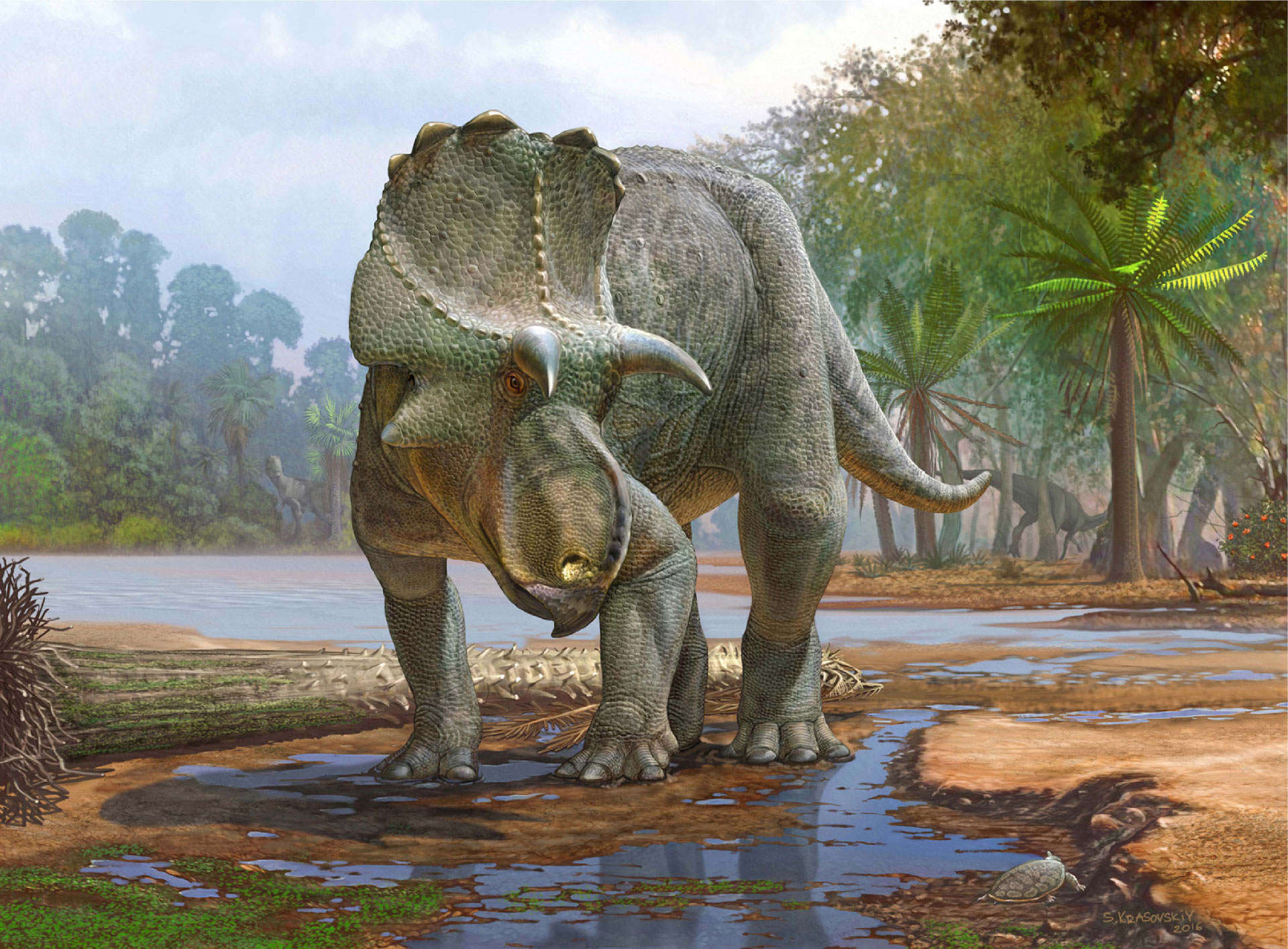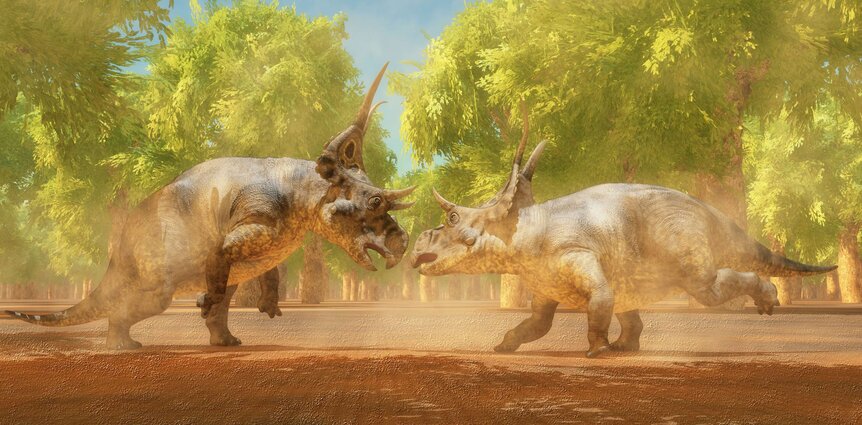Create a free profile to get unlimited access to exclusive videos, sweepstakes, and more!
Horns aplenty! Frilled early relative of Triceratops discovered in New Mexico

Jurassic Park’s Dr. Alan Grant named Triceratops as his favorite childhood dinosaur and who are we to argue, as the fierce-looking horned herbivore must have cut a striking figure while foraging for food in primeval forests.
Now a newly discovered genus and species of ceratopsid (horned) dinosaur that precedes Triceratops has been identified by fossilized specimens first unearthed in New Mexico.
This ornately crowned creature was described in a research paper recently published in the online journal PalZ and belongs to the Centrosaurinae group, which are horned dinos that existed mostly in the northern area of the continent of Laramidia. That ancient territory was an island continent found during the Late Cretaceous period, when the Western Interior Seaway split the continent of North America in half.
Officially catalogued as Menefeeceratops sealeyi, the parrot-beaked, ridge-headed beast lived earlier in the Cretaceous period roughly 82 million years ago and was smaller than Triceratops at approximately 13-15 feet long.
“Ceratopsids are better known from various localities in western North America during the Late Cretaceous near the end of the time of dinosaurs,” noted Dr. Steven Jasinski, a paleontologist from the Section of Paleontology and Geology at the State Museum of Pennsylvania. “But we have less information about the group, and their fossils are rarer, when you go back before about 79 million years ago.”
Menefeeceratops sealeyi’s incomplete skeleton, which included portions of its skull and lower jaws, forearm, hindlimbs, pelvis, vertebrae, and rib, was first discovered back in 1996 amid the rocky layers of the Menefee Formation in northwestern New Mexico.
That unearthing was accomplished by Paul Sealey, a research associate of the New Mexico Museum of Natural History and Science and its new official name honors his historic find.
“Some of the key features that distinguish Menefeeceratops sealeyi from other horned dinosaurs involve the bone that make up the sides of the dinosaur’s frill, known as the squamosal,” the paleontologists explained. “While less ornate than those of some other ceratopsids, Menefeeceratops sealeyi’s squamosal has a distinct pattern of concave and convex parts.”
One interesting observation made by Jasinski and his team were pathological marks possibly pointing to a severe injury of some sort on the animal's vertebrae close to the spinal column base.
The newly identified dinosaur was a major component of a thriving prehistoric ecosystem that was populated by a variety of well-known species like hadrosaurids, dromaeosaurids, the ankylosaur Invictarx zephyri, and the tyrannosaurid dinosaur Dynamoterror dynastes.
“Menefeeceratops sealeyi provides new information about the diversity of morphologies throughout different species and the temporal and paleobiogeographic distribution of these animals throughout Laramidia during the Late Cretaceous,” Dr. Jasinski and his colleagues stated.
“Its presence as one of the, if not the, oldest members of Centrosaurinae also suggests centrosaurines originated in the southern portions of western North America and the southern Rocky Mountain region, and subsequently radiated north during the Upper Middle to Late Campanian.”




























